‘A national phenomenon’: What the FA Cup final used to mean
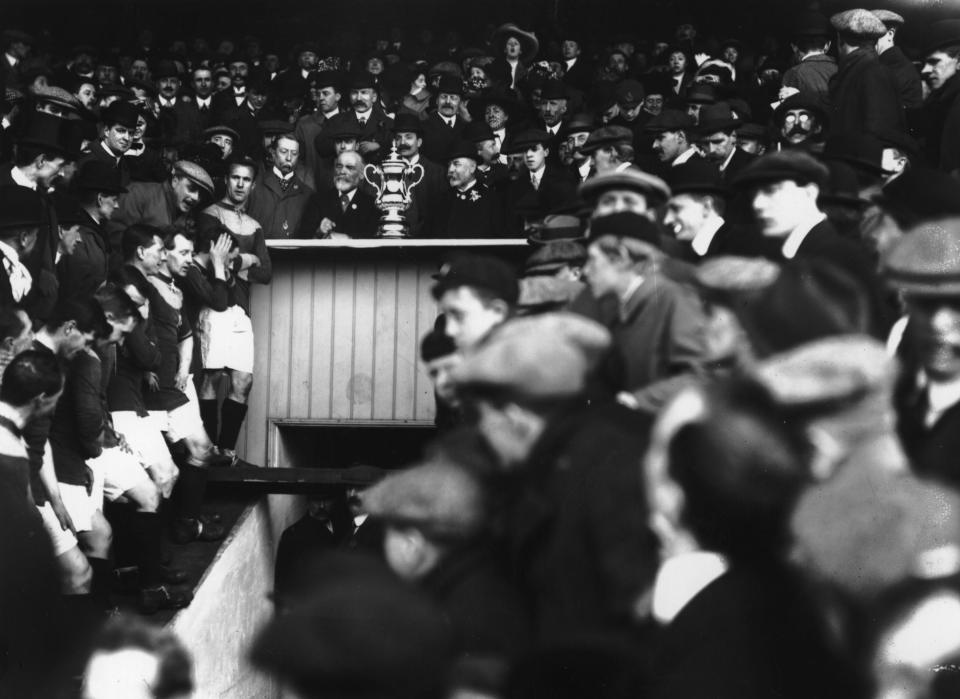
There aren’t too many similarities between the football of 1953 and now, but there’s something about Saturday that means Chelsea and Leicester City players might feel the way Nat Lofthouse did ahead of that most famous of FA Cup finals. With more than 20,000 fans returning to Wembley, it will be a scene so familiar, and yet so novel. Lofthouse had that same sense of wonder in 1953. The Bolton Wanderers hero had played at Wembley many times, but even he was struck by the uniqueness of the stage as he lined up in the tunnel that day.
“All you can see of the stadium is a small square of light some 20 or 30 yards ahead,” Lofthouse is quoted as saying in David Tossell’s book The Great English Final. “There will be a joke and a laugh but the tension is there. Then you start the long walk towards that square of light.”
Graeme Sharp felt the same in 1984. “The closer you’re getting to the top, the noisier it’s becoming,” the Everton FA Cup hero tells The Independent. “Then you come out of the tunnel into the open air, and it’s just unbelievable.”
The immediate thought, Sharp says, is that “I’m in a game now.” Lofthouse described it as being “in another world”.
The truth is that it has been a different world for the FA Cup final for some time, one which doesn’t inspire the same awe. Rather than again lamenting that the competition has lost meaning, though, it is for once worth reflecting on what that meaning was. They are values that are all the more important to cherish after the crisis of the Super League, and a year when everyone has been forced apart.
The FA Cup final used to English football’s national day, when every part of the game came together. That was because everyone gathered together, particularly in the communities from which the finalists hailed. Such congregations were a recognition of the very achievement winning the FA Cup used to be. It was a different challenge to the league championship, sure, but that was precisely why it was for a long time considered an equal feat. There was a “mystique” to it like the modern Champions League final, where every moment was imbued with decades of history. That afforded it a grandiosity that was itself only amplified by the smaller parts of the day, the traditions that added to every triumph.
We went from playing in front of 11,000 people in November to 54,000 in April in the cup
Dennis Tueart
This grand spirit of communion initially came from a great breakthrough, and some of the same societal forces that condition the game today: the wealthy against the poor; the establishment against the proletariat.
Twelve years after the FA Cup’s 1871 foundation, the northern working-class professionals of Blackburn Olympic finally ended the domination of the southern aristocrats playing the game as a pastime, as Old Etonians were beat 2-1. That defeat heralded an immediate democratisation of the sport. The sudden-death nature of knockout football also offered a source of both entertainment and inspiration for so many individuals, as well as identity. Towns became bound around such feats.
By 1904, 20,000 Manchester City supporters were getting trains down to London to watch Billy Meredith win the trophy against Bolton.
“One thing that really struck me when I first studied the FA Cup was to read the reports about travelling fans going to their final,” football historian David Goldblatt says. “That’s the moment – Blackburn Olympic and then Blackburn Rovers winning the FA Cup in the mid-1880s – that marks a passing, that transition from a primarily aristocratic pursuit to a working-class game. It’s all that sense of the reach of it, a rare cross-class and increasingly national phenomenon. Those Blackburn fans, as well as the players, would never have been to London before. That’s huge. For working-class Blackburn to be part of the national narrative, in the same sphere as the Old Etonians, that must have been a really powerful and intoxicating thing in Victorian England.”
The spirit of this prevailed for most of the competition’s 140 seasons. Dennis Tueart recalls similar scenes for then Second Division Sunderland’s shock run to the 1973 final against Leeds United, in what was a very different England.
“We went from playing in front of 11,000 people in November to 54,000 in April in the cup,” Tueart says. “It had an incredible effect on the community. As an example, the British ship-builders had a base on the Wear, and donated £800 to get to the semi-final and £1,200 to get to the final. That was a lot of money then. Absenteeism was also at an all-time low, and morale at an all-time high, because the lads couldn’t wait to get into work on the Monday and talk about the team at the weekend.”
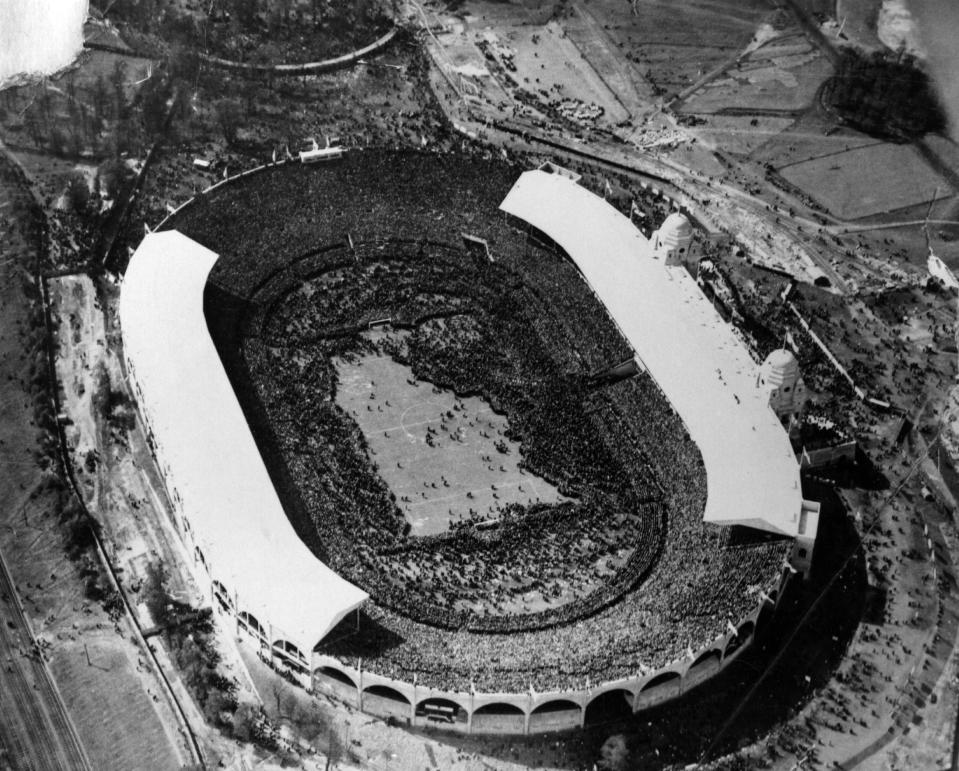
The numbers were already astounding long before then. As early as 1899, Crystal Palace saw a world-record crowd of 73,833 people for Sheffield United’s 4-1 win over Derby County, only for that to be beaten by almost 40,000 just two years later as Tottenham Hotspur became the first non-league team to win the competition. The famous 1923 “white horse final” between Bolton and West Ham United, the first at Wembley, was estimated to actually attract 300,000 supporters rather than the official 126,047.
There was one spectator that specifically stood out as he took his seat in 1901. As part of another development that defined the event as a national institution, King Edward VII accepted the role of patron of the Football Association.
“That’s a big deal,” Goldblatt argues. “King Edward isn’t showing up to watch Old Etonians. It’s working-class folk at Crystal Palace. Playing in front of the queen is no big deal these days, but in 1901 that’s huge for your average working-class player and fan. That’s a really important aspect of the FA Cup.”
Royalty would bring more lofty traditions, and a few other trappings. By 1953, the late Duke of Edinburgh was offering Blackpool’s Stanley Matthews private words of encouragement as he aimed for his first FA Cup, having told the Bolton’s burly players that their white satin shirts made them look like “pansies”. Three years later, Prince Phillip was telling Bert Trautmann to see a doctor as the City goalkeeper awkwardly went up for his medal. It turned out the German had played most of the 3-1 win over Birmingham City with a broken neck, as a former Nazi soldier became a national hero.
If the royals were among a privileged few watching this growing showpiece in person, a further crucial development was that everyone soon was able to experience it in some other form. The BBC decided to broadcast the 1927 final on the radio, allowing 15,000 Cardiff City fans who couldn’t make Wembley to listen to their team finally lift their first FA Cup by beating Arsenal 1-0. That happened to be the first game that was presaged by ‘Abide With Me’, at the request of King George V. He was asked what he wanted the bands of the Grenadiers and Irish Guards to play and chose his wife Queen Mary’s favourite hymn. From hearing the song ahead of those 1955 and 1956 finals, Trautmann later remarked on the sense of communion it fostered. "Women and children from the grimy streets of the industrial town at last are on common ground with those from the stately homes of England," Trautmann wrote in his autobiography. “It is a wonderful thing and one for which British sports lovers, regardless of politics and creed, are to be respected.”
A key was that everyone got to listen, and by then watch, as Goldblatt explains.
“The fact that the league still didn't allow radio broadcasts in the 1930s and 1940s, because they’re worried about ticket sales, means the FA Cup final is becoming part of the national calendar in the way league football never could.
“It was in the same category of national pageantry as the Boat Race.” And soon surpassing it.
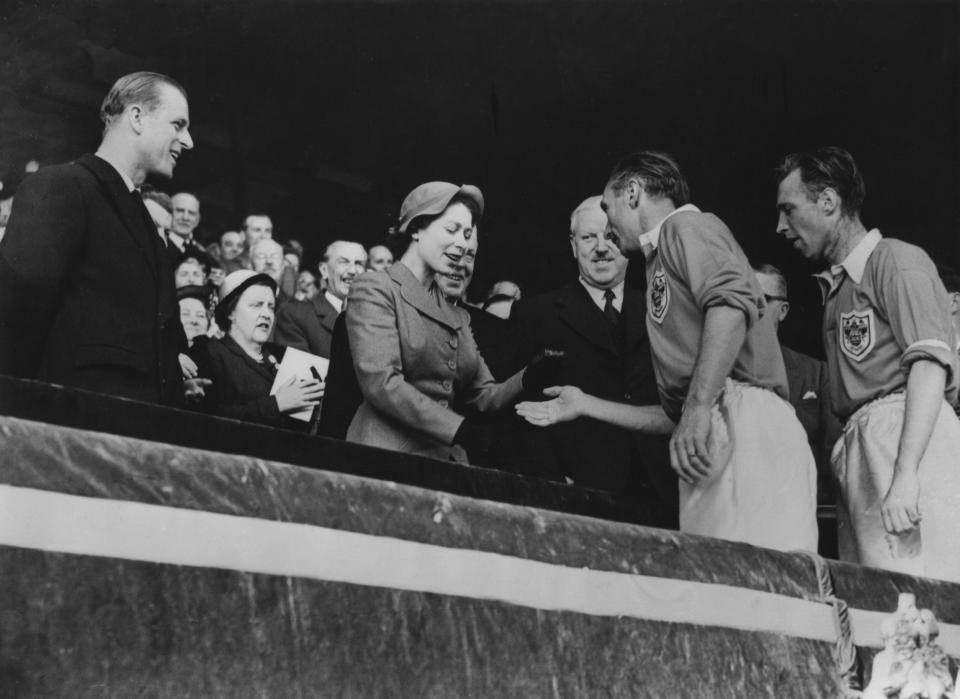
There is an irony that one of the few games in that period not fully broadcast on the radio was the 1953 final, but then that had already initiated - and been influenced by – another broadcasting revolution: television. No telling of the FA Cup’s true meaning could be complete without hailing that famous match. It was so much more than “the Matthews final”, and not just because of the praise due Stanley Mortenson, who scored the only hat-trick in a Wembley final.
It was a day when everything came together, from so many narratives to genuine historical strands, to form a centrepiece of the FA Cup’s history and the start of its golden age. Millions of people had just purchased their first television sets to watch the coronation of Queen Elizabeth II, who was attending the game. The day’s central figure, however, was an old hero rather than a new queen. The entire population outside Bolton seemed to wish for Matthews to finally win his first FA Cup, at the third attempt and at the age of 38. The Duke of Edinburgh’s private word with Matthews illustrated how his quest had elevated the game beyond its working-class support, to capture all sectors of society. It was a classic storyline, that fostered a classic final; maybe the ultimate final. Blackpool came from 3-1 down to win 4-3 thanks to a last-minute winner. It was a day that really had it all, and thereby infused the entire history of the competition with a compelling folklore.
Sociologist Gary Whannel described it as “probably the most mythologised moment in British sporting history”, along with Roger Bannister’s first sub-four-minute mile and the 1966 World Cup final.
It was by then undeniably one of the most watched moments. The success of this first ever live television broadcast ensured the BBC immediately decided to give the fixture its own annual schedule. A score of new traditions were created, as well as a national event – and a national sport.
Neville Cardus, the celebrated cricket writer, wrote a letter to The Times resignedly accepting exactly that. Having seen how a meeting between the MCC and Yorkshire had been completely overshadowed – and even delayed – by people watching the FA Cup final, he then heard everyone talk about it on the way home. Cardus realised football had finally surpassed cricket as “the game of the people”.
What really made it was that it also fired the dreams of the people. Such televised images sparked the imagination, as Tueart illustrates.
“I’m from Newcastle, and when they [Newcastle United] came back from the 1955 win, my dad took me to St James’ Park,” he says of that 1-0 win over Arsenal. “I was sat on his shoulders when the team came back. I was six, and it was magic. That was my first real experience of the cup final atmosphere. It was a golden age.”
Steve Ogrizovic, a hero of one of the last great shocks when Coventry City beat Tottenham Hotspur in 1987, explains the deeper importance of this.
“I go back to my childhood,” the former goalkeeper says. “We play football, we love football, but you never believe you’re going to be good enough to be a professional - let alone win something. The one thing you could do as a kid is dream. And that’s what you used to dream. The cup final. It would generate so much emotion and feeling that you’d want to get back on the grass and play and train as hard as you can so you could some day become a professional footballer. Never in my wildest dreams did I believe I could achieve that.”
I’ve won a Championship medal, a European medal and countless Scotland caps, but sometimes I think I’d swap the lot for an FA Cup
BIlly Bremner
That aspirational quality only added to the sense of achievement, and that deeper meaning. The FA Cup wasn’t just a piece of silverware, celebrated because of its unique knockout nature. It was seen as an equal achievement to the league, that merely involved different challenges and strengths. Hence quaint old Pathe newsreel phrases like “cup champions”. Whereas the title was about being consistent over the course of a full season, the FA Cup was about rising to the day – and then the next day, and the next day.
“The FA Cup was the adrenaline, the emotion, the excitement, all on the day,” Ogrizovic says. “That’s cup football.”
That’s an almost entirely different view to now. The rise of analytics in football means knockout competitions are viewed by some clubs in more mathematical terms. A recognition of the greater randomness of cup football almost seems to take away from the achievement, at least in terms of its value as a testament to a team’s quality.
For most of the FA Cup’s long golden age, though, that randomness only reflected the greater democratisation of English football. Just as a team could win the league straight after promotion, and the period from 1959 to 1976 could have 11 different champions with the title never retained once, anyone could win the FA Cup. Bury 1903, Preston North End 1938 and the number of times Bolton have been mentioned here demonstrate that, but you don’t have to go so far back.
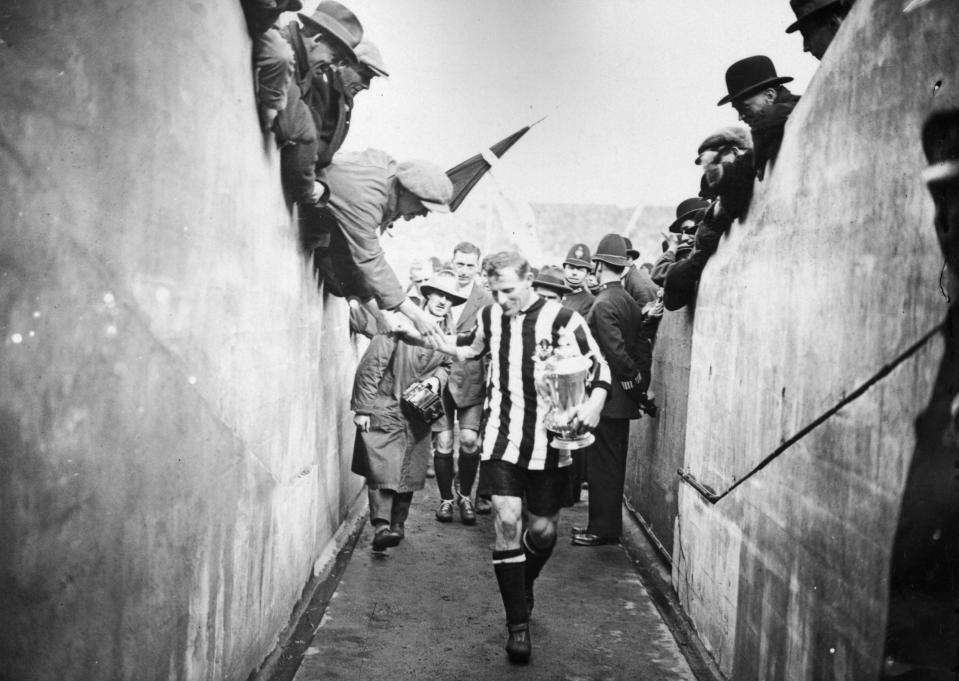
That same period 1959-76 also saw two Second Division sides win the FA Cup, after all, with Sunderland and Southampton doing it in the space of four years. Their victories ensured the average league finish for an FA Cup winner of the 1970s was 11th. That is the lowest since the second world war, although most decades were seventh or eighth, with the average finish only shooting up to third in the 2000s.
Such figures hint at the ferocity of the games throughout that golden age. There was an intensity to every fixture, as it offered the finest drama – to go with the true democracy of the earlier rounds, and games against smaller clubs. This was amplified by managers naturally playing their best teams. The idea of rotation was just unthinkable, and would have been impossible to even register.
That was why Sir Alex Ferguson’s decision to drop Jim Leighton in 1990 was itself unthinkable, and genuinely one of the most controversial team selections in football history. To choose to bring in your sub goalkeeper for such a game was a decision of such magnitude it isn’t far off the equivalent of dropping Leo Messi or Cristiano Ronaldo for the Champions League final.
The cup was one of the great quests of any season, in the way Uefa’s great competition is now.
That can be seen in Sir Matt Busby’s attitude, seven years before the original European Cup was created. Ahead of the 1948 final, which was to be his first trophy with Manchester United, he had one inspirational message for his players. “The greatest thrill in soccer is playing at Wembley on cup final day.”
There was a holy grail element to England’s great competition, best shown by Matthews, but also demonstrated by countless other greats. As late as 1991, Brian Clough’s longing for an FA Cup medal was one of the last driving themes of his otherwise illustrious career. Before that, on the eve of the 1972 final between Leeds United and Arsenal, Billy Bremner articulated a lament that would have been shared by so many fellow footballers.
“I’ve won a Championship medal, a European medal and countless Scotland caps, but sometimes I think I’d swap the lot for an FA Cup winners’ medal.”
His teammate Jack Charlton kicked the dressing-room door in when Leeds lost the earlier 1970 final, to Chelsea.
“The disappointment was incredible,” Charlton wrote in his autobiography. “I’ve never been more upset over losing a game.” He was so furious he forgot to go out to pick up his runners-up medal. When he and Bremner finally got their winners’ medals in that 1972 showpiece, it was celebrated as if it was a Champions League.
“If somebody asked you then did you want to win the league championship or the FA Cup, it was a toss-up,” Ogrizovic says.
Back on the morning of that 1953 final, the national press made a clear choice. The FA Cup headlined the pages, even though Arsenal had secured the league title the previous night.
“In 1953,” Tossell writes, “it is still the FA Cup that shines most gloriously in the vision of the population.”
That long history, stretching back 149 years, also means it shines most gloriously in the memory of so many players. Part of the glory of scoring the FA Cup final winner was not just winning the day, as everyone watched. It was writing yourself into history, as part of a select few.
Sharp, who scored the decisive first goal in 1984 before Andy Gray hit the second, is all too appreciative of this.
“If you look through the record books, all those finals, you’ll see ‘1984: Everton 2-0 Watford; scorers Sharp and Gray’. That will never ever go away. That’s something in the annals of history for everyone to look back and see.”
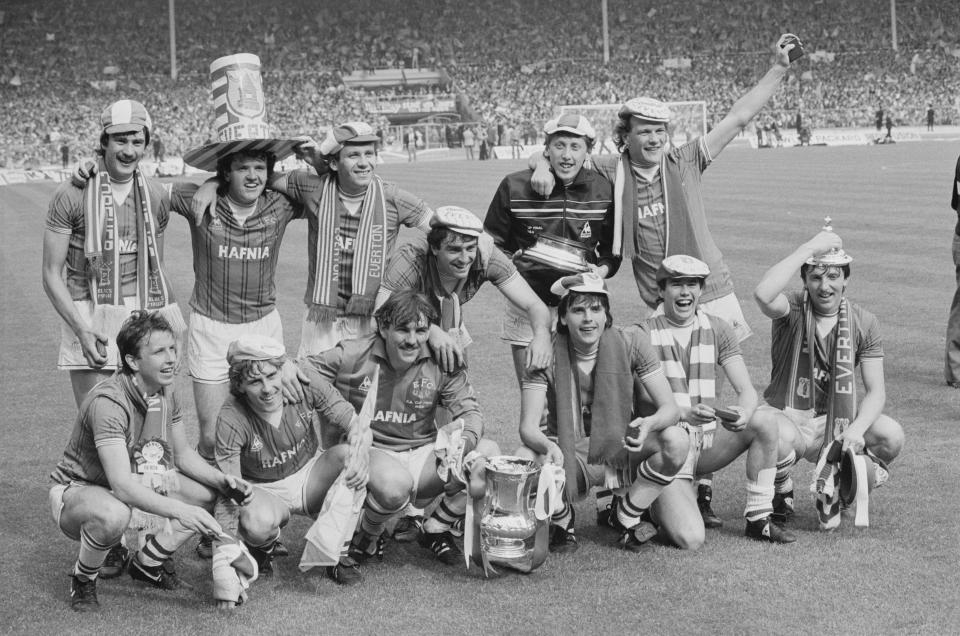
That glory is also what brought everyone out to go and see the team. The FA Cup was for so long such a unique feat that it fostered a rare unity in the communities clubs grew out of. The numbers that travelled to London for the final were often dwarfed by the numbers that greeted the winning teams on their returns. The images of these celebrations are the perfect illustrations of the communal value of football.
“When we came back on the A1 in 1973, there were people standing on the overhead bridges, just to see us in a flash as the bus went past,” Tueart says of Sunderland’s 1973 win. “I don’t know how long these guys had been waiting. There were people wall to wall, door to door, hanging out of windows, on the way back to Roker Park. Barnes Hospital had pushed the patients out onto the balconies so they could see us go past. It was phenomenal.”
Ogrizovic has similar memories of 1987.
“You might be doing your shopping, and an old woman with no interest in football would just stop you to say she had watched that game. She’d want your autograph and before you knew where you were, there was a long line of people. It just meant so much to the fans, so much to the city of Coventry. It was that elation, that gave the city of Coventry another identity as well.”
Tueart could still feel the impact as recently as last year.
“One of our players, Billy Hughes, died just after Christmas. He played for Derby and lived there, so lots of players were there for the funeral, but a lot of supporters too. We signed a few autographs at the wake, and one guy turns around to me and says: ‘Dennis, that was the happiest day of my life.’ I think he was speaking for thousands of supporters, and the whole community.”
In life, in death, oh lord. This Saturday, Wembley will be full of colour and noise again, as thousands of supporters are at last able to come together for another national event. So familiar, yet so novel. It may not be 1953, but that is what the FA Cup is really all about.
Read More
From envelope gimmicks to under-appreciated brilliance, how Brendan Rodgers shed his Liverpool scars
Brendan Rodgers urges Leicester to ‘create an incredible legacy’ in FA Cup final
Premier League top four fixtures: Liverpool, Chelsea, Leicester and West Ham run-ins

 Yahoo Finance
Yahoo Finance 